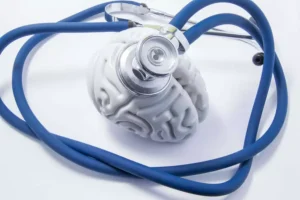Content
Services that are involved with those who misuse alcohol fit into a wider context of safeguarding young people from harm and need to work to ensure that the rights of children, young people and their parents are respected. Local protocols between alcohol treatment services and local safeguarding and family services determine the specific actions to be taken (Department for Children, Schools and Families, National Treatment Agency & Department https://ecosoberhouse.com/article/what-is-the-difference-between-alcohol-abuse-and-alcoholism/ of Health, 2009). Not everyone who abuses alcohol is physically dependent on it, but alcohol dependence is a key sign of an alcohol use disorder. Additionally, another difference between alcohol abuse and alcohol dependence is the severity of drinking. People who abuse alcohol may engage in heavy drinking or binge drinking, but they don’t need to drink every day to feel normal or satisfy an urge, unlike people with alcohol addictions.
- However, there are two main concepts that separate the alcoholic from the problem drinker.
- The CAGE questionnaire, the name of which is an acronym of its four questions, is a widely used method of screening for alcohol dependence.
- For example, any alcohol consumption by a pregnant person can be considered alcohol misuse, as well as drinking under the legal age of 21.
- Screening and brief intervention delivered by a non-specialist practitioner is a cost-effective approach for hazardous and harmful drinkers (NICE, 2010a).
Therefore, appropriate liaison with criminal justice services is essential for this group. Alcohol can, temporarily at least, reduce the symptoms of anxiety and depression, leading to the theory that alcohol use in this situation is a form of ‘self-medication’. This theory, however, lacks clear experimental support, and the longer-term effects of alcohol worsen these disorders. The person often can’t, or won’t, stop drinking even when it causes severe and detrimental health issues, not to mention relational and legal issues. An alcoholic may not even drink every day, but when they do, they almost always lose control of when, or if, they stop. They stop because they pass out, their supply runs out, they get arrested, in a fight, or some other external interference with their ability to continue drinking.
Substance Abuse
Discovering your child is drinking can generate fear, confusion, and anger in parents. It’s important to remain calm when confronting your teen, and only do so when everyone is sober. Explain your concerns and make it clear that your concern comes from a place of love. Start by talking honestly and openly with the friend or family member who’s drinking too much. You have a persistent desire to cut down or stop your alcohol use, but your efforts to quit have been unsuccessful. You often drink more alcohol than you wanted to, for longer than you intended, or despite telling yourself you wouldn’t.
If you suspect that you or a loved one is suffering from an alcohol use disorder and would benefit from alcohol rehab, give our addiction specialists at Comprehensive Wellness Centers a call today. Whether you choose to go to rehab, rely on self-help programs, get therapy, or take a self-directed treatment approach, support is essential. Recovering from alcohol addiction is much easier when you have people you can lean on for encouragement, comfort, and guidance. Without support, it’s easy to fall back into old patterns when the road gets tough. Binge drinking can have many of the same long-term effects on your health, relationships, and finances as other types of problem drinking. Binge drinking can lead to reckless behavior such as violence, having unprotected sex, and driving under the influence.
Social Media
Further, for people with significant psychiatric or physical comorbidity (for example, depressive disorder or alcoholic liver disease), abstinence is the appropriate goal. However, hazardous and harmful drinkers, and those with a low level of alcohol dependence, may be able to achieve a goal of moderate alcohol consumption (Raistrick et al., 2006). Screening and brief intervention delivered by a non-specialist practitioner is a cost-effective approach for hazardous and harmful drinkers (NICE, 2010a). However, for people who are alcohol dependent, brief interventions are less effective and referral to a specialist service is likely to be necessary (Moyer et al., 2002). It is important, therefore, that health and social care professionals are able to identify and appropriately refer harmful drinkers who do not respond to brief interventions, and those who are alcohol dependent, to appropriate specialist services.
- Al-anon uses the same 12 steps as AA with some modifications and is focused on meeting the needs of friends and family members of alcoholics.
- If you have developed alcohol dependence and decide to quit drinking, you can expect to experience withdrawal symptoms.
- All together, this history of alcohol abuse indicates a pattern of behavior that suggests the term alcoholism, with its dependency and status as a disorder, applies to the case.
- It’s not always easy to tell when occasional or moderate alcohol use becomes alcohol abuse or addiction.
To that end, just communicating about your issue can help you identify what’s at the root of your decision-making process. It is normally described simply as the “misuse of alcohol.” This can be applied to a wide variety of circumstances. As you seek help and hope to rebuild your life, you will likely encounter these terms again and again. That is why it is so important to have an understanding of what exactly they mean. Once you get the differences sorted out, you will be able to use these terms with confidence to properly describe your situation and get the help you need. More importantly, you will feel empowered to talk about your struggles with accuracy and self-assurance.
What is the Difference between Alcohol Abuse & Dependence
Liaison with criminal justice services is necessary to ensure that appropriate co-ordination of care and effective communication and information-sharing protocols are in place. The physical harm related to alcohol is a consequence of its toxic and dependence-producing properties. Ethanol (or ethyl alcohol) in alcoholic beverages is produced by the fermentation of sugar by yeast. It is a small molecule that is rapidly absorbed in the gut and is distributed to, and has effects in, every part of the body. Most organs in the body can be affected by the toxic effects of alcohol, resulting in more than 60 different diseases.
Is alcohol abuse disorder the same as alcoholism?
It encompasses the conditions that some people refer to as alcohol abuse, alcohol dependence, alcohol addiction, and the colloquial term, alcoholism. Considered a brain disorder, AUD can be mild, moderate, or severe.
Social learning theory also provides some explanations of increased risk of excessive drinking and the development of alcohol dependence. People can learn from families and peer groups through a process of modelling patterns of drinking and expectancies (beliefs) about the effects of alcohol. Teenagers with higher positive expectancies (for example, that drinking is pleasurable and desirable) are more likely to start drinking at an earlier age and to drink more heavily (Christiansen et al., 1989; Dunn & Goldman, 1998).
Alcoholism can affect both your personal and professional life, in addition to your mental and physical health. From liver disease to cancer to depression, various complications can result from untreated alcohol addiction. Tolerance is when they need to increase the amount of alcohol they drink to experience the same side effects.
As an isolated occurrence, some of these signs are not necessarily a cause for immediate concern. But if you start to experience several of these symptoms regularly or every time you drink, there’s a chance you’re looking at alcoholism. Alcoholism is defined as the use of alcoholic drinks that is both continuous and compulsive. This means the afflicted individual drinks without conscious reasoning in response to an irresistible urge and keeps on drinking for an extended period of time.
The majority of the remainder are referred by other specialist addiction services or criminal justice services. Therefore assessment should not be narrowly focused on alcohol consumption, but should include all areas of physical, psychological and social functioning. The idea that a particular ‘addictive personality’ leads to the development of alcohol dependence is popular with some addiction counsellors, but does not have strong support from research. Often with patients in treatment for alcohol dependence, it is difficult to disentangle the effects of alcohol on the expression of personality and behaviour from those personality factors that preceded alcohol dependence.



